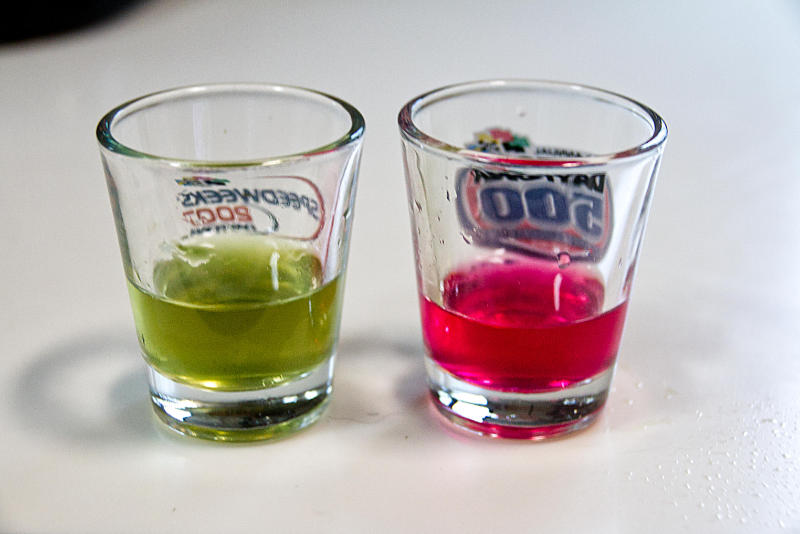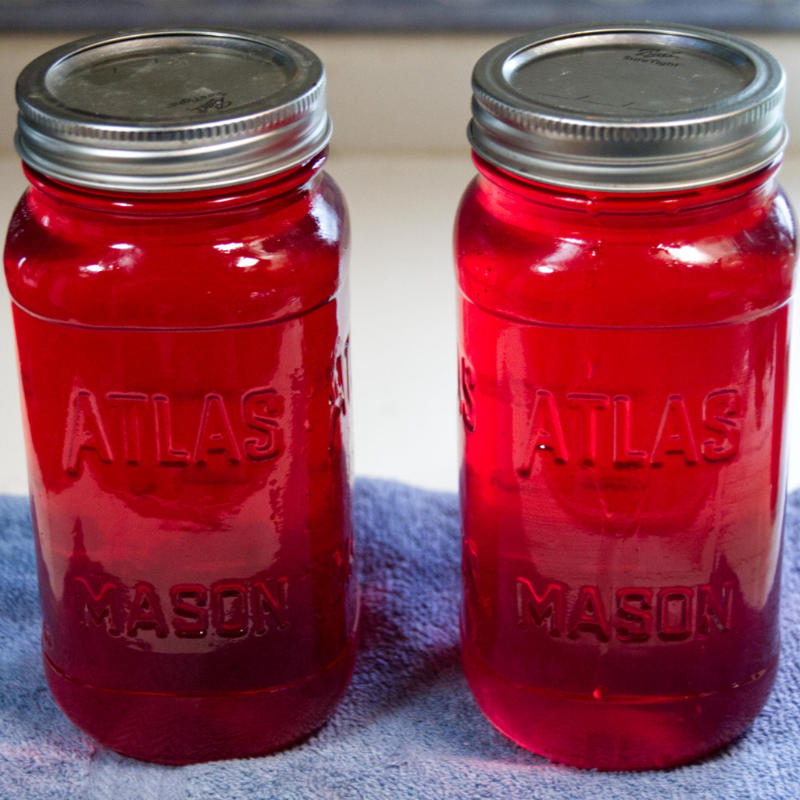Do you love trying new and unique recipes? If so, have you ever heard of Redbud Jelly? This delightful spread is made from the vibrant and fragrant flowers of the Eastern Redbud tree. Redbud jelly is a sweet and tangy treat that will add a burst of flavor to your breakfast or dessert. In this article, we’ll explore the process of making Redbud jelly from scratch, including tips and tricks for a successful batch. So, get ready to indulge your taste buds and impress your friends with this one-of-a-kind recipe!
The Eastern Redbud tree grows in, you guessed it, the Eastern United States. Its range is from the east coast as far north as New Jersey, west to the Ozark Region, and south to Florida.
These trees are common in the Ozarks. They bloom in early Spring from March through May. They are easy to spot in the woods as they are usually blooming when other trees haven’t set their leaves yet. You may also see them blooming alongside other early-blooming trees, such as wild plum or dogwood trees.
You must gather the flowers while they are in bloom, or wait until the following Spring to gather the flowers for use in making jelly. One thing I learned this year with experimentation is that you can freeze the flowers and then use them to make this jelly. I have a gallon baggie of them in the freezer. I’ll keep working with them to see if they lose anything throughout the year in the freezer.
Making Redbud Jelly
The initial step in making redbud jelly is to gather the flowers. We lucked out this year because we had some wet, heavy snow near the end of winter. This broke over a few of the redbud trees on the property. This made it much easier to gather the flowers for this jelly.
Check out the video to see gathering the flowers, as well as the process I used for making the jelly.
To gather the flowers I use a small plastic freezer container. The container holds about 2 cups of flowers. Hold the container under the branch you are gathering from, wrap your fingers around the branch and strip off the flowers with your hand. The container will catch most of the flowers you might drop.
I read that you should remove the stems from the flowers and only use the flower petals. Some sources suggest the stems can make the jelly bitter. I didn’t have time to sit and remove all the stems, and I can say that the jelly I made is delicious, with no hint of bitterness. If you have the time to remove the stems, by all means, do it if you feel like it. But it doesn’t appear to change the taste of the jelly if you don’t remove all of them.
Once you have gathered 2 cups we need to make tea with the flowers we have collected.
Making Redbud Tea for Redbud Jelly
The next step is to make tea from the flowers. To do this place your flowers in a heat-safe container. Make sure the container can hold 2 cups of blooms plus 4 cups of water.
Next, boil 4 cups of water and slowly pour the boiling water over the redbud flowers. Use a spoon to stir them in and mash them down into the water. You want to get as many of the flowers in contact with the hot water as possible.
Other floral teas we use to make jelly can be steeped in water for around 2 hours and then used to make jelly. Redbud flowers take much longer to give up their color. For redbud flowers, cover and place the bowl containing the tea aside for 2 hours to steep and cool. I like to come by about every 30 minutes and stir the tea to make sure all the flowers come in contact with the water.
After 2 hours place your tea in the refrigerator and steep them for another 22-24 hours. Don’t be too concerned when you remove your tea from the refrigerator and find that your tea isn’t a deep pink to purple color just like the flowers. it will actually turn a light green color. But don’t worry, your jelly will turn out just like the featured image in this post. It just takes a little chemical magic and the tea turns a light pink that darkens as you cook the jelly. Let me explain how this works.
Why is my Redbud Tea Green?
When you make your tea the color from the redbud flower is removed and is dissolved into the water you use to make the tea. When I first steeped a batch of flowers to make the tea, I thought I had really messed up. But here is what actually happens.

I knew from making wild violet jelly that the addition of lemon juice or citric acid changed the color of the tea from a dark purple to a light pinkish-red color. So I decided to do an experiment to be sure I wasn’t going to waste my time making green jelly which was horrible.
Since you can substitute citric acid crystals for lemon juice at 1/4 teaspoon per tablespoon of lemon juice called for in the recipe, I used a small amount of citric acid, dropped it in the tea, and watched the color change from that icky green color to a lovely red color. This assured me my jelly would turn out fine, so I set about making the redbud jelly.
Making Redbud Jelly
What You Need
- 2 cups Redbud Flowers
- 4 cups Water
- 7 cups Sugar
- 1 package (1.75 oz) fruit pectin
- 2 TBSP Lemon Juice
- 8 oz Jelly Jars
Remove your tea from the refrigerator and strain it through a fine-mesh filter or coffee filter to filter out the plant material. I bought a reusable coffee filter to filter mine. Squeeze out the liquid from the plant material to remove as much liquid as possible. You should have 3 1/2 – 4 cups of tea. If you don’t have 4 cups you can just add water to make it equal 4 cups.
Now transfer the redbud tea to a large saucepan. Pick a large pan because the jelly will boil up when cooking, and you don’t want it to boil over.
Next, add 2 tablespoons of lemon juice and 1 package of powdered fruit pectin. If you can’t find it you can buy it at the link above.
When you add the lemon juice (you can also use citric acid crystals) you will see the tea turn from green to a light pink color. Add one package (1.75 oz) of powdered pectin (not liquid or low-sugar pectin) and begin heating. Stir constantly as you bring the mixture to a full boil. A full boil is one that can’t be stirred down. Set a timer for 1 minute and boil for 1 minute.
After 1 minute add 7 cups of sugar or the amount recommended by the manufacturer on the pectin packaging. I say this because I followed another jelly recipe that called for 4 cups of sugar on the first batch, and I needed to add an additional 3 cups of sugar and boil it again the next day because it hadn’t set after 36 hours. Jelly is very sensitive to the amount of acid and sugar in the recipe, and won’t set if you get it wrong. Just use the recommended amount of sugar from the pectin manufacturer and you should be fine.
After adding the sugar bring the jelly back to a full boil for 1-2 minutes, then ladle the jelly into jars. Leave 1/4 to 1/2 inch headspace, wipe the mouth of the jars, and place a lid on them. You should can the jars at this step in a water-bath canner if you want the jelly to be shelf-stable. Since I only make it in small batches I just let them cool and then put them in the refrigerator to finish setting.
This recipe will make around eight small 8 oz jars of jelly. The jelly has a sweet floral taste with a hint of lemon, primarily due to the lemon juice we add. It is great on biscuits or toast and just may become your family’s favorite jelly.
Be sure and check out our recipes for making wild violet jelly and dandelion jelly.
FAQs:
Q: What does redbud jelly taste like?
A: Redbud jelly has a sweet and slightly tart flavor with floral undertones.
Q: What is Redbud jelly made of?
A: Redbud jelly is made from the flowers of the Eastern Redbud tree, sugar, and pectin.
Q: Are redbuds edible?
A: Yes, redbuds are edible, and their flowers, leaves, and pods are used in a variety of culinary applications.
Q: What are the medicinal properties of redbud?
A: Redbuds have been traditionally used in herbal medicine for their astringent and anti-inflammatory properties. They are also a good source of vitamin C.
